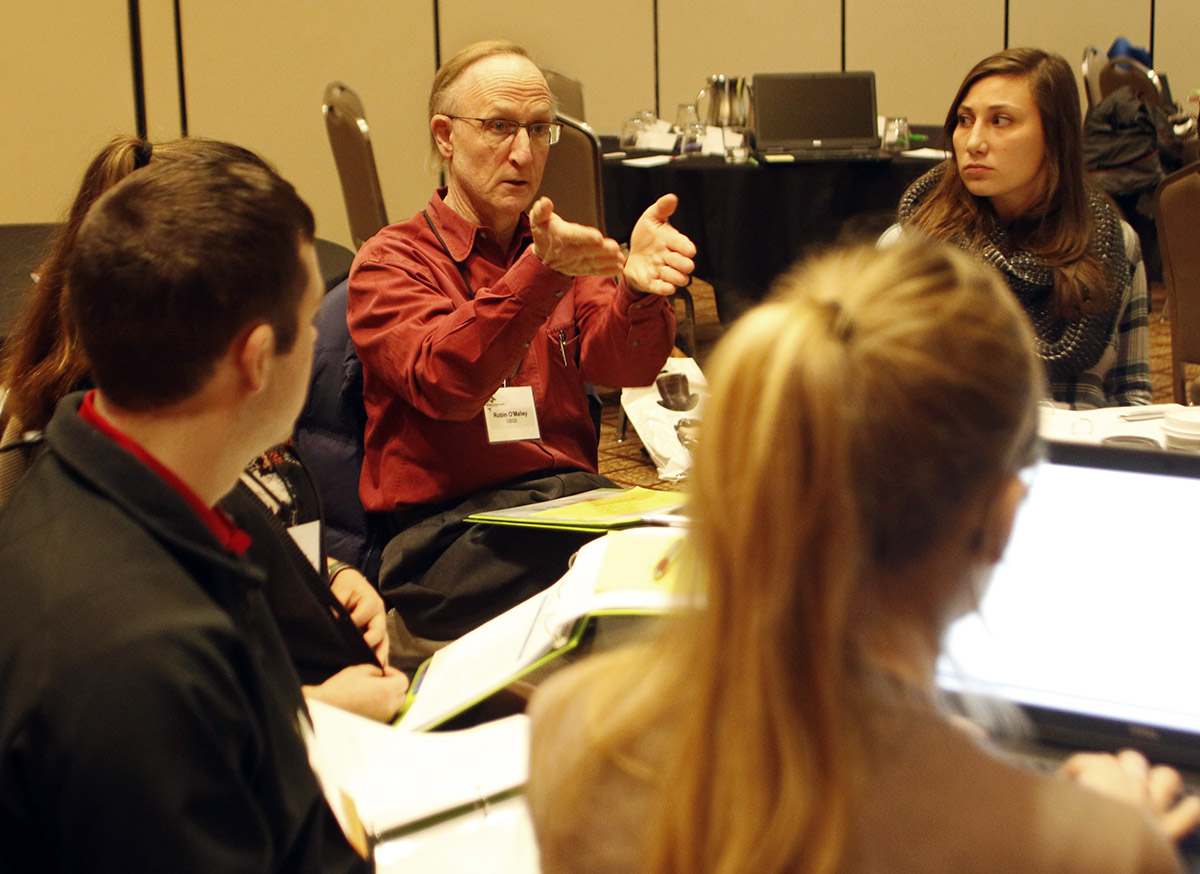
State and regional climatologists and fisheries and wildlife professionals know this to be true: Changes in climate are a growing threat to fish and wildlife populations in the Midwest. Higher temperatures. More sporadic and heavier rainfall. Longer periods of frost-free days. Each of these – changes already seen in the Midwest – are altering plant and animal cycles.
Moose are moving north to kill off ticks that plague them; winters in their previous habit no longer remain cold enough long enough to kill them off. Snowshoe hares are turning from white to brown earlier each spring. Birds are migrating sooner, and growing seasons have increased by as much as 10 days across the Great Plains. These examples were just a few that came up during a climate and wildlife workshop hosted at the 77th Midwest Fisheries and Wildlife Conference. Martha Shulski, director of the Nebraska State Climate Office, and Natalie Umphlett and Crystal Stiles of the High Plains Regional Climate Center, both at the School of Natural Resources at University of Nebraska-Lincoln, spearheaded the workshop intended to help fisheries and wildlife professionals examine how weather and climate information could be integrated into management decisions.
“We want to understand what your needs are,” Shulski said, kicking off the workshop. “We want to understand from you how you use climate information or how you want to use climate information and what you want to get out of it. That’s the goal today.”
Participants got a crash course in climate (weather is your at-bat; climate is your batting average) as well as in tools available to pull climate data, such as those utilizing the Applied Climate Information System. (ACIS is a distributed climate data analysis system that manages the flow of climate information from data collection to end users and is developed and maintained by the NOAA Regional Climate Centers.) Participants also learned about climate variability and how data shows trends are going up.
“Climate change is like you going up an escalator,” Shulski said, "and then the variability, things like El Nino, is you’re jumping up and down on that escalator. You’re going from the stair above you to the stair below you, but you’re still marching up.”
Shulski shared data sets and maps that show nighttime low temperatures are increasing, winter and spring seasons are warming faster than historical records show, frost-free seasons have lengthened and the Midwest is wetter overall than the normal set over a 30-year period.
Both the state and regional climate offices can turn this type of climate data into information people can apply to their sector, but they also can give it a historical context, Umphlett said.
“We can break down climate metrics and apply it to the specific area you need,” she said. For example, a recent tool created for farmers indicates when the orange wheat blossom midge is likely to hit crops.
Given a “trigger” the climate offices can create a suite of tools useful to fish and wildlife professionals to know when action needs to occur. The problem, of course, being which triggers fish and wildlife professionals need to make these decisions.
An overarching theme from a 90-minute break out session was that difficult decisions will need to be made by fish and wildlife professionals in the near future. Disruptions in climate already are altering life cycles of species through shifts in watersheds, reduction in snowpack, more and longer droughts, and increasing air temperature. But at the same time, climate is only a part of the equation. State to state water use, altered landscapes and even migration shifts are part of it, too.
“These are all complex issues,” Stiles said. “They are not easy to solve.”
That’s why the state climate office and the regional climate center plan to continue pursuing partnerships with fish and wildlife professionals. And why that pursuit will be returned. The workshop was just the first in what both groups hope will be the start of partnerships that result in useable tools.
Clay Buchanan, assistant federal aid coordinator for the Michigan Department of Natural Resources who attended the session, sees value in learning more about climate data sources, tools and climate change impacts to be used in natural resource management decisions and looks forward to training opportunities on scaling climate projections to specific needs of state biologists or research scientists.
“The climate workshop was beneficial,” he said. “I learned of the ways other state agencies and organizations were dealing with climate change and what questions they were asking relative to their natural resources and stakeholders.
“The organizers were exceptionally knowledgeable and interested in meeting the needs of climate data users, too.”
Shawna Richter-Ryerson, Natural Resources